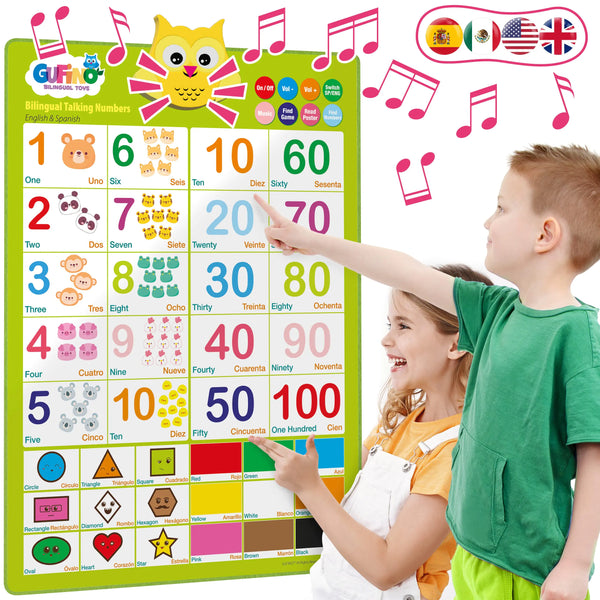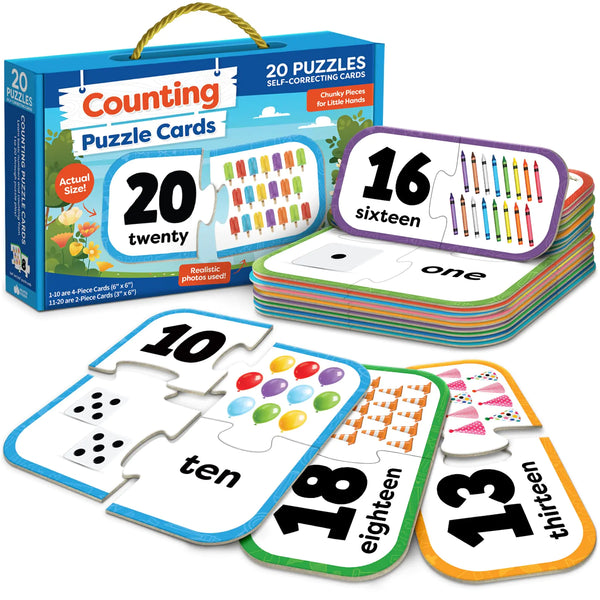In an era of rapidly advancing technology, it's crucial to equip the younger generation with the skills and knowledge they need to thrive. DIY electronics kits for teens are an excellent way to inspire budding innovators, offering hands-on learning experiences beyond traditional classroom settings. These kits make learning fun and help develop critical problem-solving skills, creativity, and a deep understanding of STEM concepts. Let's explore why DIY electronics kits are perfect for teens and how they can pave the way for future success.
Key Takeaways
- DIY electronics kits provide an immersive, hands-on learning experience for teens.
- These kits encourage the development of problem-solving skills and creativity.
- They help enhance STEM knowledge and prepare teens for future careers in technology.
- Choosing the right kit depends on skill level, budget, and the quality of contents.
- Safety guidelines and proper supervision are essential when using DIY electronics kits.
Why DIY Electronics Kits Are Perfect for Teens

DIY electronics kits offer teens a hands-on learning experience that traditional classroom settings often lack. By physically assembling components and seeing the results of their work, teens can better grasp complex concepts. This tactile approach makes learning more engaging and memorable.
When teens work on DIY electronics projects, they inevitably encounter challenges that require problem-solving. These kits encourage them to think critically and develop solutions independently. This not only enhances their problem-solving skills but also builds resilience and perseverance.
DIY electronics kits are a fantastic way to foster teens' creativity. Whether designing a custom game console or building a simple robot, these projects allow them to express their creativity while learning valuable technical skills. The ability to create something from scratch can be advantageous and inspiring.
DIY electronics kits are more than just educational tools; they're gateways to a world of innovation and creativity for teens.
Top DIY Electronics Kits for Teens

Arduino Starter Kits
Arduino starter kits are a fantastic way for teens to dive into electronics and programming. These kits typically include a microcontroller board, various sensors, and many components to build multiple projects. Arduino kits are perfect for beginners because they offer a hands-on approach to learning coding and electronics. Teens can make anything from simple LED circuits to complex projects like weather stations or home automation systems.
Raspberry Pi Projects
Raspberry Pi projects are another excellent option for teens interested in electronics and computing. A Raspberry Pi is a small, affordable computer that can be used for a variety of projects, from building a custom game console to creating a home media center. These kits often include the Raspberry Pi board, power supply, and other essential components.
Robotics Kits
Robotics kits are perfect for teens who are fascinated by robots and automation. These kits usually include motors, sensors, and a microcontroller for building and programming robots. Teens can create anything from simple robotic arms to more complex robots that can navigate obstacles or follow lines. Robotics kits teach valuable STEM skills and encourage creativity and problem-solving. They are ideal for teens who want to explore the exciting world of robotics and engineering.
Investing in DIY electronics kits can be a game-changer for your teen, sparking their interest in STEM and providing them with the tools to become the innovators of tomorrow.
How to Choose the Right DIY Electronics Kit

Skill Level Considerations
When picking a DIY electronics kit for your teen, it's essential to match it to their current skill level. Simpler kits that introduce basic principles are ideal for beginners. For those with more experience, look for advanced kits that offer more challenging projects. Choosing the right skill level ensures your teen stays engaged and doesn't get frustrated.
Budget-Friendly Options
DIY electronics kits are available at a range of prices, so you can find one that fits your budget. While more expensive kits often have more components and advanced features, there are plenty of affordable options that still offer a rich learning experience. Remember, the most expensive kit isn't always the best for your teen.
Kit Contents and Quality
Before making a purchase, closely examine what the kit includes. High-quality kits will consist of all necessary components, clear instructions, and, sometimes, online resources or community support. A well-rounded kit can distinguish between a frustrating experience and an inspiring one.
Opt for kits that offer room for growth. Kits that can be expanded or have more advanced projects available provide a continuing learning journey, keeping teens engaged as their skills develop.
Benefits of DIY Electronics Kits for Teens

Boosting Confidence
One of the most rewarding aspects of DIY electronics kits is how they boost teens' confidence. When they complete a project, they get a sense of accomplishment that is hard to match. This newfound confidence can spill over into other areas of their lives, making them more willing to tackle challenges head-on.
Enhancing STEM Knowledge
DIY electronics kits are a fantastic way to enhance STEM knowledge. These kits provide hands-on experience with science, technology, engineering, and math concepts. Teens learn by doing, often more effectively than traditional classroom learning. Plus, they get to see the real-world applications of what they are learning, making the experience both educational and fun.
Preparing for Future Careers
By introducing teens to the practical aspects of engineering through these kits, we’re preparing them for a future that is increasingly dependent on technological proficiency. They experience the thrill of building and creating, which can be a powerful motivator in their educational journey. These experiences are often the first steps toward a fulfilling career in engineering or technology.
DIY electronics kits are not just toys; they are tools that can shape the future of our teens. By engaging in these activities, teens are not just learning about engineering; they are honing skills that will be invaluable in any future career path, particularly in STEM fields.
Fun Projects to Try with DIY Electronics Kits

Building a Simple Robot
Building a simple robot is one of the most exciting projects you can do with a DIY electronics kit. This project introduces teens to the basics of robotics and helps them understand how different components work together. It's a fantastic way to boost their problem-solving skills and creativity. Plus, who wouldn't want to build their robot?
Creating a Custom Game Console
Imagine the thrill of playing a game on a console you built yourself! With DIY electronics kits, teens can create their custom game consoles. This project is perfect for those interested in gaming and coding. It provides a hands-on experience that can make learning about electronics and programming incredibly fun.
Designing Smart Home Gadgets
Smart home gadgets are all the rage these days, and teens can design their own with a DIY electronics kit. Whether it's a bright light switch or a home security system, this project allows them to explore the world of IoT (Internet of Things). It's a great way to learn about modern technology and its applications in everyday life.
These projects not only make learning fun but also provide practical skills that can be useful in future careers. Encouraging your teen to dive into these projects can be a great way to inspire the next generation of innovators.
Safety Tips for Using DIY Electronics Kits

Understanding Safety Guidelines
Before diving into any DIY electronics project, it's crucial to understand the safety guidelines. Always read the instruction manual that comes with the kit. This will help you and your teen understand the potential hazards and how to avoid them. Discuss these guidelines with your teen to ensure they understand the importance of safety.
Using the Right Tools
Using the correct tools is essential to the project's success and your teen's safety. Ensure the tools provided in the kit are appropriate for your teen's age and skill level. If the kit requires additional tools, ensure they are in good condition and suitable for the task. Quality tools can make a significant difference in preventing accidents.
Supervision and Support
Supervision is key when teens are working on DIY electronics projects. While these kits are designed to be educational and fun, they often contain small parts and electronic components that require careful handling. Always supervise your teen when they are working on projects, especially if they are new to electronics. Offer support and guidance to help them navigate any challenges they may encounter.
By considering these safety tips and supervising the learning process, you can ensure that your teen enjoys their engineering projects and learns in a safe and responsible environment.
Inspiring Success Stories from Teen Innovators

Young Inventors Making Waves
Ever wondered what happens when you give a teen a soldering iron and a circuit board? These young inventors are not just playing with toys; they're crafting the future with LEDs and lines of code. From creating innovative projects to winning science fairs, these teens are turning their puzzle pieces into prototypes for the next big thing.
Award-Winning Projects
Some teens have taken their DIY electronics kits to the next level by winning prestigious awards. These success stories highlight the real-world impact and potential of skills gained from these kits. Imagine your teen's excitement when their project wins a science fair or a tech competition!
Community Impact
Many teen innovators use their skills to make a difference in their communities. Whether it's developing a low-cost solution to a local problem or starting a tech club at school, these young minds are proving that age is just a number when it comes to innovation.
These stories are not just inspiring; they show the limitless possibilities that come with a bit of curiosity and a DIY electronics kit.
Integrating DIY Electronics Kits into School Curriculum

Collaborative Learning
Integrating DIY electronics kits into the school curriculum can foster a collaborative learning environment. Students can work in groups to solve problems, share ideas, and build projects together. This enhances their technical skills and improves their ability to work as part of a team. Collaboration is key in many STEM fields; these kits provide a fun and engaging way to develop this essential skill.
Project-Based Assignments
DIY electronics kits are perfect for project-based assignments. Instead of traditional lectures, students can gain hands-on experience through real-world projects. This learning method helps them understand complex concepts more quickly and retain information longer. Plus, it makes learning exciting and relevant to their everyday lives.
Teacher Resources
Many DIY electronics kits have comprehensive teacher resources, including lesson plans, tutorials, and troubleshooting guides. These resources make it easier for teachers to integrate the kits into their existing curriculum and ensure students get the most out of their learning experience. With the proper support, teachers can inspire the next generation of innovators and problem-solvers.
Integrating these kits into the curriculum not only makes learning more interactive but also prepares students for future careers in STEM fields.
Where to Buy the Best DIY Electronics Kits for Teens

Finding your teen's perfect DIY electronics kit can be a fun adventure. Here are some of the best places to look:
Online Retailers
Online shopping offers a vast selection of DIY electronics kits. Websites like Amazon, eBay, and specialized STEM education platforms provide a wide range of options. The ultimate guide to DIY electronics kits for teens offers hands-on learning opportunities in electronics, coding, and engineering. Plus, you can read reviews from other parents to ensure you're making a good choice.
Specialty Stores
For those who prefer a more hands-on shopping experience, specialty stores like Micro Center or Fry's Electronics are great options. These stores often have knowledgeable staff who can help you choose the right kit based on your teen's skill level and interests.
Second-Hand Options
Don't overlook second-hand options, such as thrift stores and online marketplaces like Craigslist and Facebook Marketplace. These can be budget-friendly options, especially if you're looking for high-quality, gently used kits. Just make sure to check the kit contents and quality before making a purchase.
Whether it’s robotics, renewable energy, or mechanical engineering, select a kit that aligns with the teen’s specific areas of interest. This ensures that the learning experience is both enjoyable and relevant.
The Future of DIY Electronics Kits

The future of DIY electronics kits is inspiring, especially with the rapid pace of technological advancements. Emerging technologies such as AI, IoT, and machine learning are increasingly integrated into these kits, making them more sophisticated and educational. Imagine your teen building a smart home gadget that learns and adapts to their needs—how cool is that?
One of the most exciting trends is the move towards more interactive and immersive experiences. Kits are no longer just about assembling components; they now offer virtual reality (VR) and augmented reality (AR) integrations. This not only makes learning more engaging but also helps teens understand complex concepts more intuitively.
AI and machine learning are not just buzzwords; they are becoming integral parts of DIY electronics kits. These technologies allow for more personalized learning experiences. For instance, some kits now come with AI-driven tutorials that adapt to your teen's learning pace, ensuring they grasp each concept thoroughly.
The future of DIY electronics kits is not just about keeping up with technology but about preparing our teens for a world where these skills will be essential. Investing in these kits is like giving your child a head start in the race towards innovation.
Getting Started with Your First DIY Electronics Kit

Unboxing your first DIY electronics kit is like opening a treasure chest of possibilities. Each component has a purpose, and the excitement of discovering what each piece does is part of the fun. Read the instructions carefully and lay out all the parts before you start. This will help you understand what you’re working with and avoid confusion later.
Understanding the essential components is crucial for any DIY electronics project. Most kits include resistors, capacitors, LEDs, and microcontrollers. These might initially sound intimidating, but they are the building blocks of your project. Think of them as the ingredients in a recipe; each has a specific role.
Starting with a simple project can boost your confidence and make learning enjoyable. Here are a few beginner-friendly ideas:
- LED Blinking Light: This classic project helps you understand the basics of circuits and coding.
- Simple Alarm System: Learn how to use sensors and buzzers to create a basic alarm.
- Mini Weather Station: Sensors measure temperature and humidity, and the data is displayed on an LCD screen.
Remember, the goal is to have fun and learn. Don’t worry if things don’t work perfectly the first time. Experimenting and troubleshooting are part of the process.
Getting started with DIY electronics kits can be a rewarding experience for both teens and parents. It’s not just about building gadgets; it’s about fostering a love for learning and innovation. So go ahead, dive in, and let the adventure begin!
Embark on an exciting journey into the world of electronics with your first DIY electronics kit! Whether you're a beginner or an enthusiast, our comprehensive guide will help you get started easily. Discover step-by-step instructions, essential tips, and expert advice to make your project successful. Ready to dive in?
In a nutshell, DIY electronics kits for teens are more than just a fun pastime—they're a gateway to a world of innovation and creativity. These kits empower teens to explore, experiment, and ultimately, to understand the technology that shapes our world. By diving into these hands-on projects, teens gain valuable skills and ignite a passion for learning and discovery that can last a lifetime. So, whether your teen is a budding engineer or just curious about how things work, these kits are the perfect way to inspire the next generation of innovators.
Frequently Asked Questions
What are DIY electronics kits?
DIY electronics kits are educational tools that provide components and instructions for building electronic projects. They are designed to teach users about electronics, coding, and engineering through hands-on experience.
Why are DIY electronics kits suitable for teens?
DIY electronics kits offer a hands-on learning experience that fosters problem-solving skills, creativity, and a deeper understanding of STEM concepts. They are engaging and provide practical knowledge that can inspire future careers in technology and engineering.
What is included in a typical DIY electronics kit?
A typical DIY electronics kit includes various components such as resistors, capacitors, microcontrollers, sensors, and wires. It also includes detailed instructions or guides to help users assemble and understand the project.
How do I choose the right DIY electronics kit for my teen?
Consider your teen's skill level, interests, and budget. Look for kits that match their experience level and offer projects that they find exciting. Quality and comprehensive instructions are also essential factors to consider.
Are DIY electronics kits safe for teens?
Yes, DIY electronics kits are generally safe for teens when used correctly. It is essential to follow the safety guidelines in the kit, use the right tools, and ensure proper supervision, especially for younger teens.
Can DIY electronics kits be used in school curricula?
DIY electronics kits can be integrated into school curricula to enhance STEM education. They can be used for collaborative learning, project-based assignments, and to provide practical experience with technology and engineering concepts.
What are some popular DIY electronics kits for teens?
Popular DIY electronics kits for teens include Arduino starter kits, Raspberry Pi projects, and robotics kits. These kits offer a variety of projects for different interests and skill levels.
Where can I buy DIY electronics kits for teens?
DIY electronics kits can be purchased from online retailers, specialty stores, and sometimes second-hand from other hobbyists. Popular online platforms include Amazon, Adafruit, and SparkFun.


















